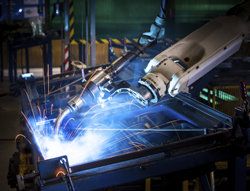Automatic quality control of welding robots
Laser welding is a technique for joining metals that is becoming much more widespread. However, since many laser-welding facilities and processes are now automated, an online inspection system using non-destructive testing is required. Finding a reliable method for detecting and avoiding faults in laser welding was the goal of the 'Closed loop control of the laser welding process through the measurement of plasma' (CLET)(opens in new window) project, funded by the EU. The project's main objective was to develop and test an automatic weld-control system for use by small and medium-sized enterprises (SMEs). During laser welding, plasma is formed and it can be characterised through its electron temperature, which is a measure of its free electron energy. The CLET project focused on plasma electron temperature as a method of detecting defects in laser welding. Project members found that there is a strong relationship between the penetration depth of the weld and the electron temperature of the plasma. Based on that relationship, the project designed a sensing system to measure penetration depth in real time and in a non-destructive way. The penetration depth sensor that CLET developed was then used as the basis of a closed-loop controller able to guarantee penetration depth specifications. This controller adjusts laser power in such a way that deviations from the desired penetration depth are reduced to almost zero. The controller has been tested and validated in the workshops of the SMEs participating in CLET. The new concept devised by the project, which is now complete, is currently the subject of a patent application.







